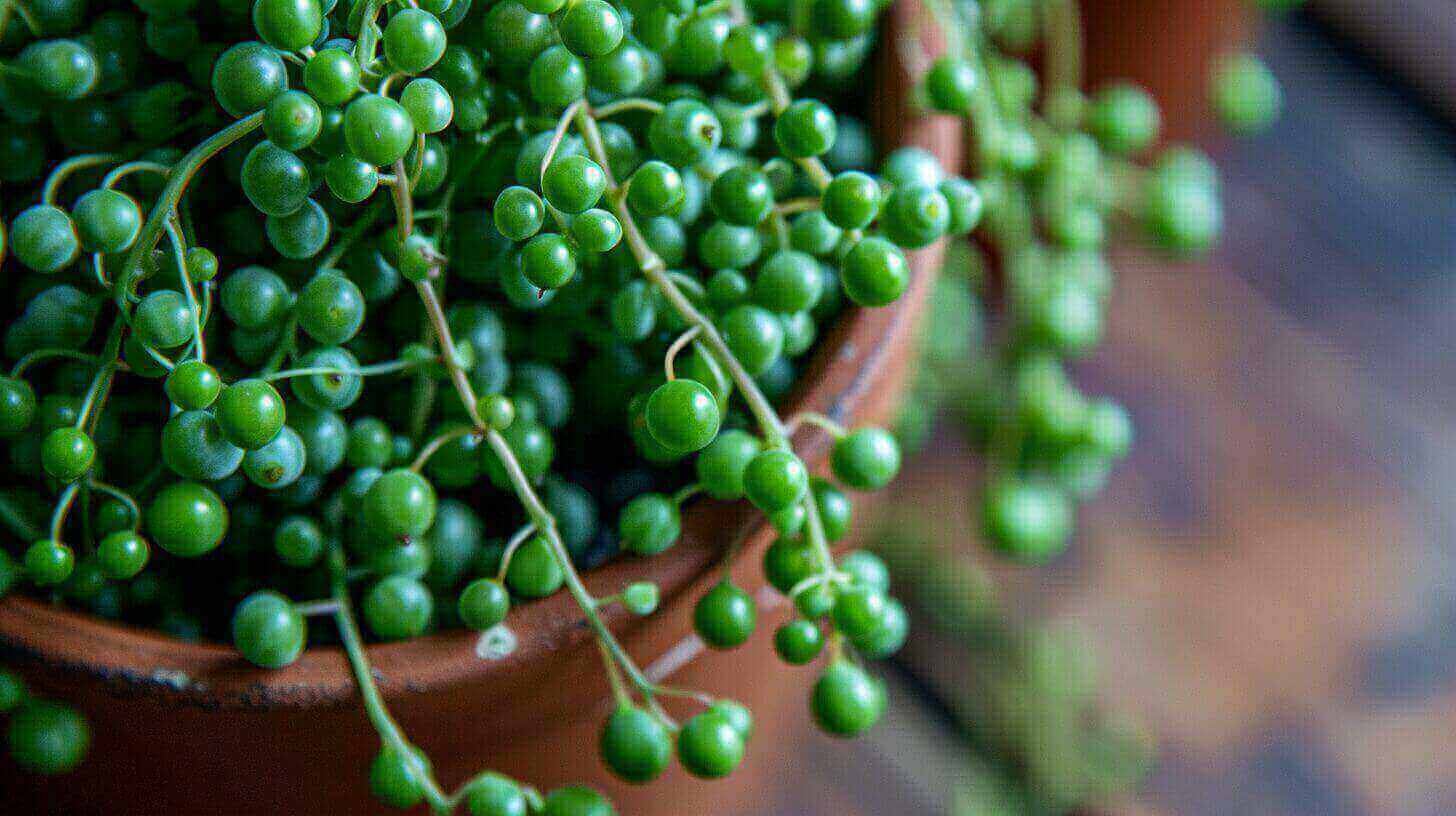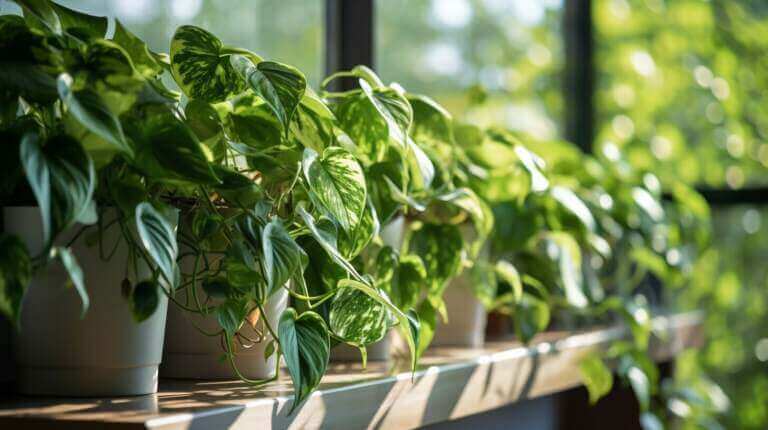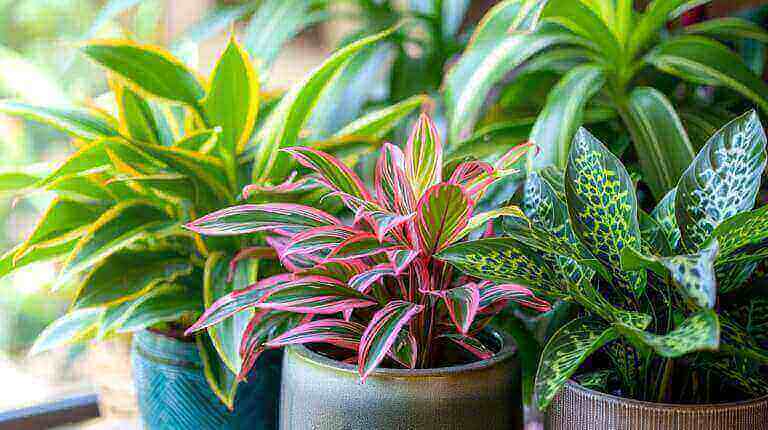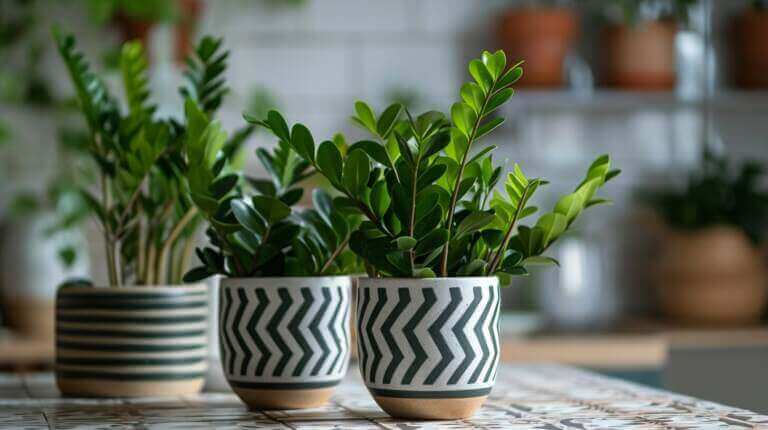String of Pearls Plant Care Guide: Light, Water, Soil Needs for Healthy Succulents
The String of Pearls plant, also known as string of beads or Senecio Rowleyanus, is a cascading succulent that can be grown both indoors and outdoors. To ensure its health and vitality, proper care is essential. In this section, I will guide you through the light, water, and soil needs of the String of Pearls plant.
Key Takeaways:
- String of Pearls plants can be grown indoors or outdoors, but protection is needed in colder temperatures.
- The String of Pearls plant is toxic if ingested, so handle with gloves and keep it out of reach of children and pets.
- Bright, indirect sunlight is ideal for the String of Pearls plant, and supplemental grow lights can be used if necessary.
- Proper watering is crucial to prevent root diseases, so allow the soil to dry out completely before watering again.
- A well-draining soil mix, such as cactus or succulent soil, is recommended for the String of Pearls plant.
- Propagating the String of Pearls plant can be done through stem cuttings placed in well-draining soil with indirect light.
Should You Grow String of Pearls Indoors or Outdoors?
The String of Pearls plant, also known as Senecio Rowleyanus, is a versatile succulent that can be grown in both indoor and outdoor settings. The decision to grow it indoors or outdoors depends on various factors such as climate, temperature, and available space.
When growing the String of Pearls indoors, it is important to place it near a window where it can receive sufficient bright, indirect sunlight. This plant thrives in warm, dry environments, making it an ideal choice for indoor houseplants. With proper care, it can bring a touch of natural beauty to your living space.
However, if you live in an area with temperatures dropping below 30 degrees Fahrenheit, it is best to grow the String of Pearls in a container that can be easily moved indoors during the colder months. This will protect the plant from frost and ensure its survival throughout the year.
For those with ample outdoor gardening space, growing the String of Pearls outdoors can create a stunning cascading display. It is recommended to place the plant in a partially shaded spot to protect it from direct sunlight, especially during the afternoon when the sun’s rays are the strongest.
Is String of Pearls Toxic?
When admiring the beauty of the String of Pearls plant, it’s important to remember that it is toxic to both humans and pets if ingested. The plant contains a sap that can cause skin irritation and gastrointestinal symptoms in humans. For pets, consuming parts of the plant can lead to various symptoms of distress. Therefore, it is crucial to handle the String of Pearls plant with care and to keep it out of reach of children and pets.
To ensure your safety while handling the String of Pearls plant, it’s recommended to wear gloves to protect your skin from the sap. In case of accidental ingestion, it’s important to seek medical attention immediately. For pets, if you suspect they have eaten any part of the plant, it’s best to consult with a veterinarian for guidance.
While the String of Pearls plant can bring beauty to your space, it’s crucial to be aware of its toxic properties and take the necessary precautions to ensure the safety of yourself, your family, and your pets.
Light Requirements for String of Pearls(Senecio Rowleyanus)
The String of Pearls plant requires bright but indirect sunlight. It is essential to provide the plant with adequate light to ensure its optimal growth and health. When grown indoors, place the String of Pearls near a window where it can receive at least 6 to 8 hours of bright, indirect light per day. This will mimic the plant’s natural habitat and promote its lush, cascading growth.
If your indoor space lacks sufficient natural light, you can supplement the plant’s light requirements with fluorescent grow lights. Position the lights a few inches above the plant to provide the right amount of intensity. Keep in mind that while the String of Pearls thrives in bright light, direct sunlight can be too harsh and scorch the delicate leaves. Therefore, it is crucial to strike a balance and avoid exposing the plant to direct sunlight for prolonged periods.
When growing the String of Pearls outdoors, choose a partially shaded spot to protect it from intense afternoon sunlight. This will prevent the leaves from burning and maintain the plant’s vibrant green color. If your area experiences extreme cold or frost, it is advisable to grow the plant in a container that can be brought indoors during unfavorable weather conditions.
Watering Guidelines for String of Pearls Care
Proper watering is crucial for the health of the String of Pearls plant. It is important to strike the right balance as overwatering can lead to rot and root diseases, while underwatering can cause the plant to wither and dry out. Follow these watering guidelines to keep your String of Pearls thriving:
Watering Frequency
The general rule of thumb for watering the String of Pearls is to water it thoroughly and then allow the soil to dry out completely before watering again. This mimics the plant’s natural habitat where it receives periodic rainfall followed by dry periods. The frequency of watering will depend on various factors such as climate, humidity levels, and the type of container and soil used. On average, watering once every two to three weeks should be sufficient.
Watering Technique
When watering the String of Pearls, it is important to water the soil directly rather than spraying the leaves or soaking the pearls. This helps prevent the plant from becoming waterlogged, which can lead to root rot. Use a watering can with a narrow spout or a small watering bottle to direct the water at the base of the plant, ensuring it reaches the roots.
Winter Watering
During the winter months, the String of Pearls enters a period of dormancy and requires less water. Reduce watering frequency to once per month and only water when the soil is completely dry. Be mindful of the temperature and humidity levels in your home during this time, as they can affect the plant’s watering needs.
Soil Requirements for String of Pearls Need
When it comes to the soil requirements for the String of Pearls plant, a well-draining medium is essential for its health and growth. This succulent thrives in soil that allows excess water to flow out easily, preventing the roots from sitting in damp conditions.
A cactus or succulent soil mix is the perfect choice for the String of Pearls plant. This type of soil provides the necessary drainage and aeration that the plant craves. You can also enhance the soil’s drainage properties by adding perlite, which helps to create air pockets and prevent compaction.
It’s important to note that regular potting soil is not suitable for the String of Pearls plant. Regular potting soil tends to retain moisture for longer periods, which can lead to root rot and other issues. To maintain the health of your plant, opt for a well-draining soil mix and ensure that excess water can freely escape the pot.
Cactus and Succulent Soil Mix Recipe
If you prefer to make your own soil mix for the String of Pearls plant, here’s a simple recipe to try:
- Start with a base of regular potting soil.
- Add an equal amount of coarse sand or perlite to improve drainage.
- Mix in some pumice or volcanic rock to enhance aeration.
- Optionally, you can add a small amount of organic matter, such as coconut coir or compost, to provide some nutrients.
- Thoroughly mix all the components together until well-blended.
This homemade soil mix will ensure that your String of Pearls plant has the perfect balance of moisture retention and drainage, promoting healthy root growth and overall plant vigor.
Comparison of Different Soil Mixes
| Soil Mix | Drainage | Moisture Retention | Aeration |
|---|---|---|---|
| Cactus and Succulent Soil Mix | Excellent | Low | Good |
| Regular Potting Soil | Poor | High | Poor |
| Homemade Soil Mix (with Perlite and Sand) | Good | Moderate | Good |
This table provides a comparison of different soil mixes for the String of Pearls plant. As you can see, the cactus and succulent soil mix offers excellent drainage and aeration, while regular potting soil retains too much moisture. The homemade soil mix strikes a balance between the two, providing good drainage, moderate moisture retention, and adequate aeration.
Propagating String of Pearls
When it comes to propagating the stunning String of Pearls plant, you’ll be delighted to know that it’s a relatively simple process. By utilizing stem cuttings, you can create new plants to enjoy or share with fellow succulent enthusiasts. Here’s how to go about it:
1. Prepare the stem cuttings: Select a healthy stem from your mature String of Pearls plant. Using clean, sharp scissors or pruning shears, make a clean cut just below a leaf node. Allow the cutting to dry for a day or two until the cut end calluses over. This step is crucial in preventing rot once the cutting is planted.
2. Potting the cuttings: Fill a pot with well-draining soil, such as a cactus or succulent mix. Create a small hole with your finger or a pencil and place the calloused end of the cutting into the hole. Gently press the soil around the base of the cutting to secure it in place. Ensure the cutting is standing upright, with the leaf nodes exposed above the soil.
3. Care and propagation: Once you’ve potted the cuttings, it’s essential to provide them with the right conditions for successful propagation. Place the pot in a location where it will receive bright, indirect light. Avoid placing it in direct sunlight, as this can scorch the delicate leaves. Keep the soil lightly moist, but not soggy, as excessive moisture can lead to rot. Over the next few weeks, roots will begin to develop, signaling that your propagation attempt was successful.
FAQ
Can the String of Pearls plant be grown indoors and outdoors?
Yes, the String of Pearls plant can be grown both indoors and outdoors.
Is the String of Pearls plant toxic?
Yes, the String of Pearls plant is toxic to both humans and pets if ingested.
How much sunlight does the String of Pearls plant need?
The String of Pearls plant requires bright but indirect sunlight. It should receive at least 6 to 8 hours of bright, indirect light per day.
How often should I water the String of Pearls plant?
It is important to water the plant thoroughly and then allow the soil to dry out completely before watering again. During winter, reduce watering to once per month.
What type of soil does the String of Pearls plant need?
The String of Pearls plant requires well-draining soil. A cactus or succulent soil mix is ideal.
How do I propagate the String of Pearls plant?
The String of Pearls plant can be propagated through stem cuttings. Simply cut a healthy stem, allow it to dry for a day or two, and then place it in well-draining soil.







